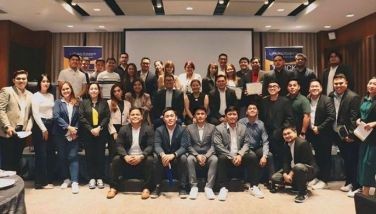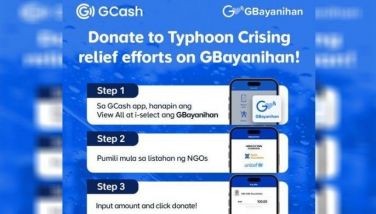The Philippines is a player
November 14, 2005 | 12:00am
In a recent article published in the McKinsey Quarterly, a quarterly publication of the consulting firm McKinsey (see http:// www.mckinseyquarterly.com, you may need to register to get the free article on the Philippines), Chris Beshouri and his team highlight the pros and cons of the Philippines as an outsourcing destination.
According to the article, the Philippines is preferred because of its lower wages and the quality of its work pool. Our work pool is preferred by a factor of 2 to 1 versus India for finance degree holders, and 2.5 to 1 for science researchers; even our engineers are preferred to India’s.
They identify other criteria that locators look for: vendor landscape, market access, risk profile, business environment, and quality of infrastructure. As the Philippines is relatively young in the outsourcing game, the vendor landscape and market access will solve itself. As far as risk profiles, I believe the Philippines has a lower calamity risk profile than India and can be mitigated by good backup protocols.
The country’s sub par business environment is the biggest drawback. To quote the article, the business environment "… suffers from strict labor laws, high levels of corruption, and a surfeit (glut) of bureaucracy. Obtaining approval to open a call center in the Philippines, for instance, takes twice as much time as it does in India or Malaysia." The Philippines has the highest electricity cost in the region and one of the higher telecommunication costs.
Between 2003 and 2008, the McKinsey Global Institute estimates that there will be about 2.6 million outsourcing jobs created. The Philippines has 100,000 outsourcing seats currently. How much of the new jobs can be captured? The only way to maintain competitiveness is to keep our wages low, the quality of our labor pool high, and reduce or eliminate the friction or cost of doing business in the Philippines through less bureaucracy, clear rules of engagement, and lower power and telecom costs.
My Two Cents: At the risk of sounding like a broken record, the Philippines is on the verge of a huge window of opportunity (then again, we have been on the verge since 1960). We have strengths that we need to highlight and risks we need to mitigate or eliminate. All the negatives that the article talked about can be fixed, but we need to fix them fast. Let’s get off our behinds and get our country moving.
Six months ago… HP/Compaq fired Carly Fiorina and hired John Hurd from NCR. Today, HP’s stock has increased 40 percent, while Dell had a few hiccups and has fallen 20 percent.
One year ago… President Bush was re-elected President by running on a platform of fear of terrorism and that he was the one with the resolve to fight the terrorists. He was re-elected by a thin margin. Today, his popularity has dropped so low that Republican governors were not re-elected in last week’s elections in New Jersey and Virginia.
Two years ago… AOL was a pariah, Internet advertising was a non-revenue model, and Gerry Levin and Steve Case, who engineered the acquisition for Time and AOL, respectively, lost their reputation. Today, everyone from Microsoft to Google is salivating to buy a piece of AOL.
Two years ago… Ms. Dinky Soliman was the most favored Cabinet secretary. President GMA even restructured the reporting lines of the Sweepstakes office to report to the Department of Social Welfare and Development which Ms. Soliman headed. Today, she has quit the current administration and has asked her former boss to resign. She is under investigation by the Ombudsman (disclosure: DFNN initiated the complaint) and the Sweepstakes office has been transferred to the Department of Health.
Four years ago…the then Vice President GMA was the intelligent alternative to the (alleged) heavy drinking and less articulate President Erap. The country even went to the streets for People Power 2. Today, everyone in politics is thinking (even devising) of ways to shorten her term. I wonder what the man on the street thinks?
My Two Cents: When I was growing up, my accounting professor taught me that there were two things certain in life: death and taxes. Today, there are four: death, taxes, IT, and change.
Dickson Co is the CFO (C is for cheap) for Dfnn, Intelligent Wave Philippines and HatchAsia.com. For comments or suggestions, e-mail twocents88@yahoo.com.
According to the article, the Philippines is preferred because of its lower wages and the quality of its work pool. Our work pool is preferred by a factor of 2 to 1 versus India for finance degree holders, and 2.5 to 1 for science researchers; even our engineers are preferred to India’s.
They identify other criteria that locators look for: vendor landscape, market access, risk profile, business environment, and quality of infrastructure. As the Philippines is relatively young in the outsourcing game, the vendor landscape and market access will solve itself. As far as risk profiles, I believe the Philippines has a lower calamity risk profile than India and can be mitigated by good backup protocols.
The country’s sub par business environment is the biggest drawback. To quote the article, the business environment "… suffers from strict labor laws, high levels of corruption, and a surfeit (glut) of bureaucracy. Obtaining approval to open a call center in the Philippines, for instance, takes twice as much time as it does in India or Malaysia." The Philippines has the highest electricity cost in the region and one of the higher telecommunication costs.
Between 2003 and 2008, the McKinsey Global Institute estimates that there will be about 2.6 million outsourcing jobs created. The Philippines has 100,000 outsourcing seats currently. How much of the new jobs can be captured? The only way to maintain competitiveness is to keep our wages low, the quality of our labor pool high, and reduce or eliminate the friction or cost of doing business in the Philippines through less bureaucracy, clear rules of engagement, and lower power and telecom costs.
My Two Cents: At the risk of sounding like a broken record, the Philippines is on the verge of a huge window of opportunity (then again, we have been on the verge since 1960). We have strengths that we need to highlight and risks we need to mitigate or eliminate. All the negatives that the article talked about can be fixed, but we need to fix them fast. Let’s get off our behinds and get our country moving.
One year ago… President Bush was re-elected President by running on a platform of fear of terrorism and that he was the one with the resolve to fight the terrorists. He was re-elected by a thin margin. Today, his popularity has dropped so low that Republican governors were not re-elected in last week’s elections in New Jersey and Virginia.
Two years ago… AOL was a pariah, Internet advertising was a non-revenue model, and Gerry Levin and Steve Case, who engineered the acquisition for Time and AOL, respectively, lost their reputation. Today, everyone from Microsoft to Google is salivating to buy a piece of AOL.
Two years ago… Ms. Dinky Soliman was the most favored Cabinet secretary. President GMA even restructured the reporting lines of the Sweepstakes office to report to the Department of Social Welfare and Development which Ms. Soliman headed. Today, she has quit the current administration and has asked her former boss to resign. She is under investigation by the Ombudsman (disclosure: DFNN initiated the complaint) and the Sweepstakes office has been transferred to the Department of Health.
Four years ago…the then Vice President GMA was the intelligent alternative to the (alleged) heavy drinking and less articulate President Erap. The country even went to the streets for People Power 2. Today, everyone in politics is thinking (even devising) of ways to shorten her term. I wonder what the man on the street thinks?
My Two Cents: When I was growing up, my accounting professor taught me that there were two things certain in life: death and taxes. Today, there are four: death, taxes, IT, and change.
BrandSpace Articles
<
>
- Latest
Latest
Latest
Recommended


















